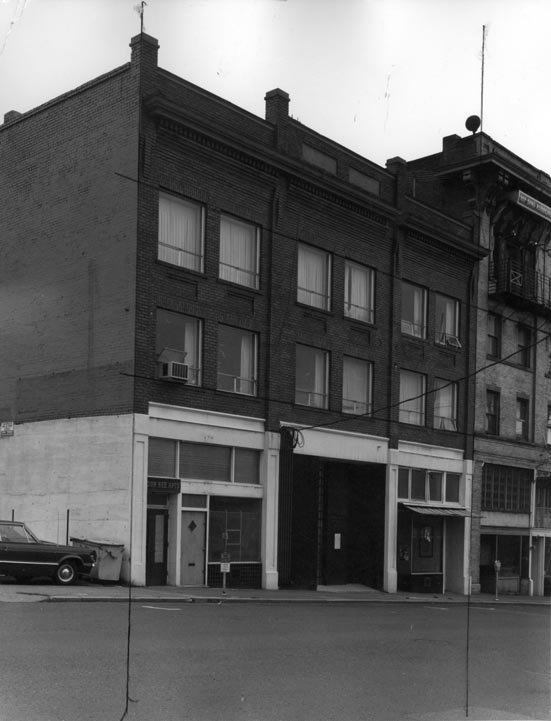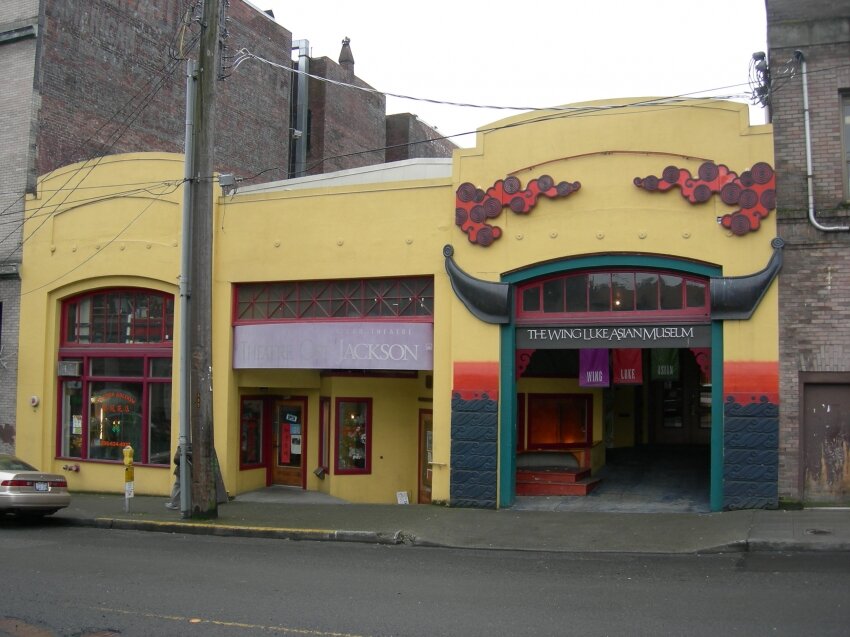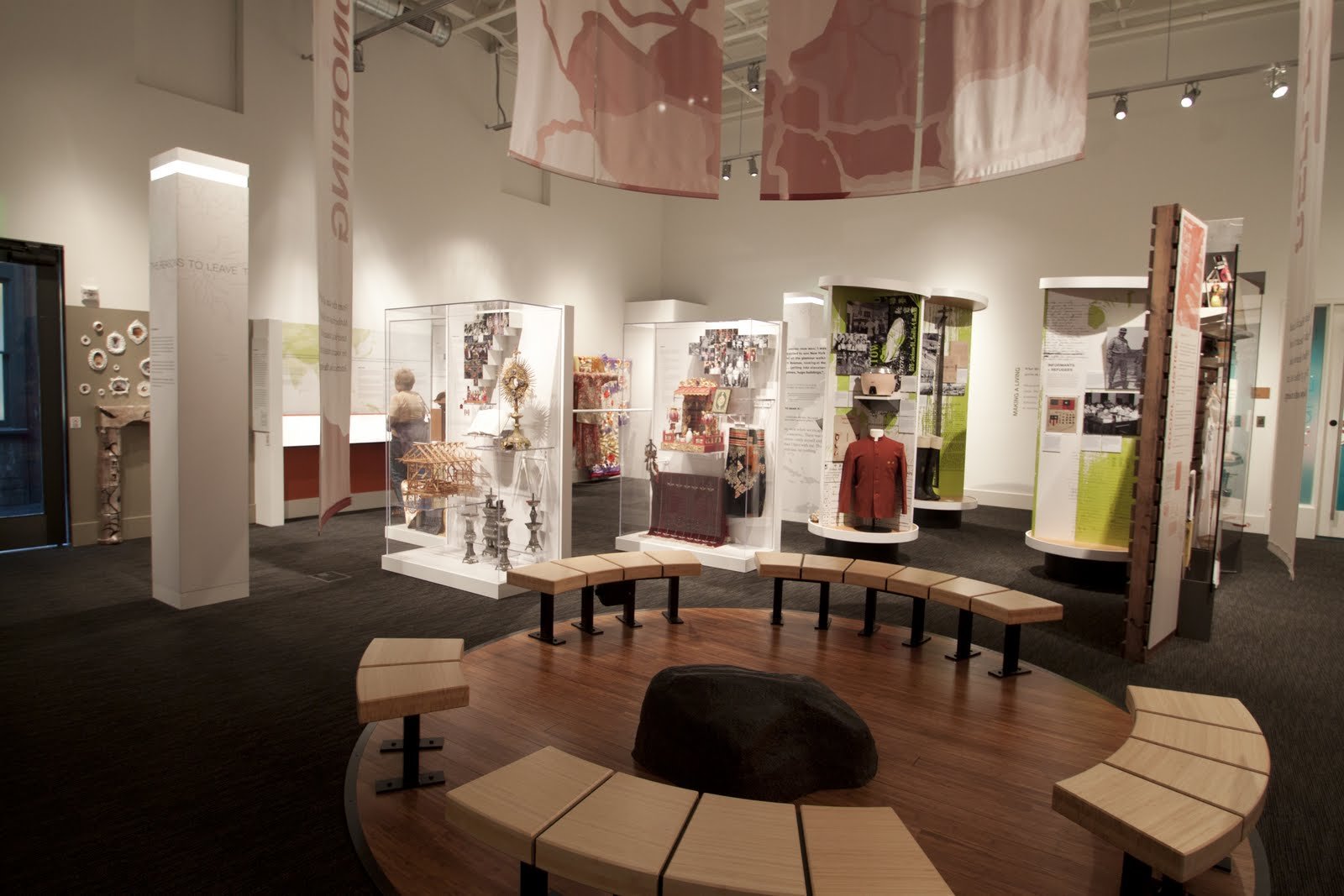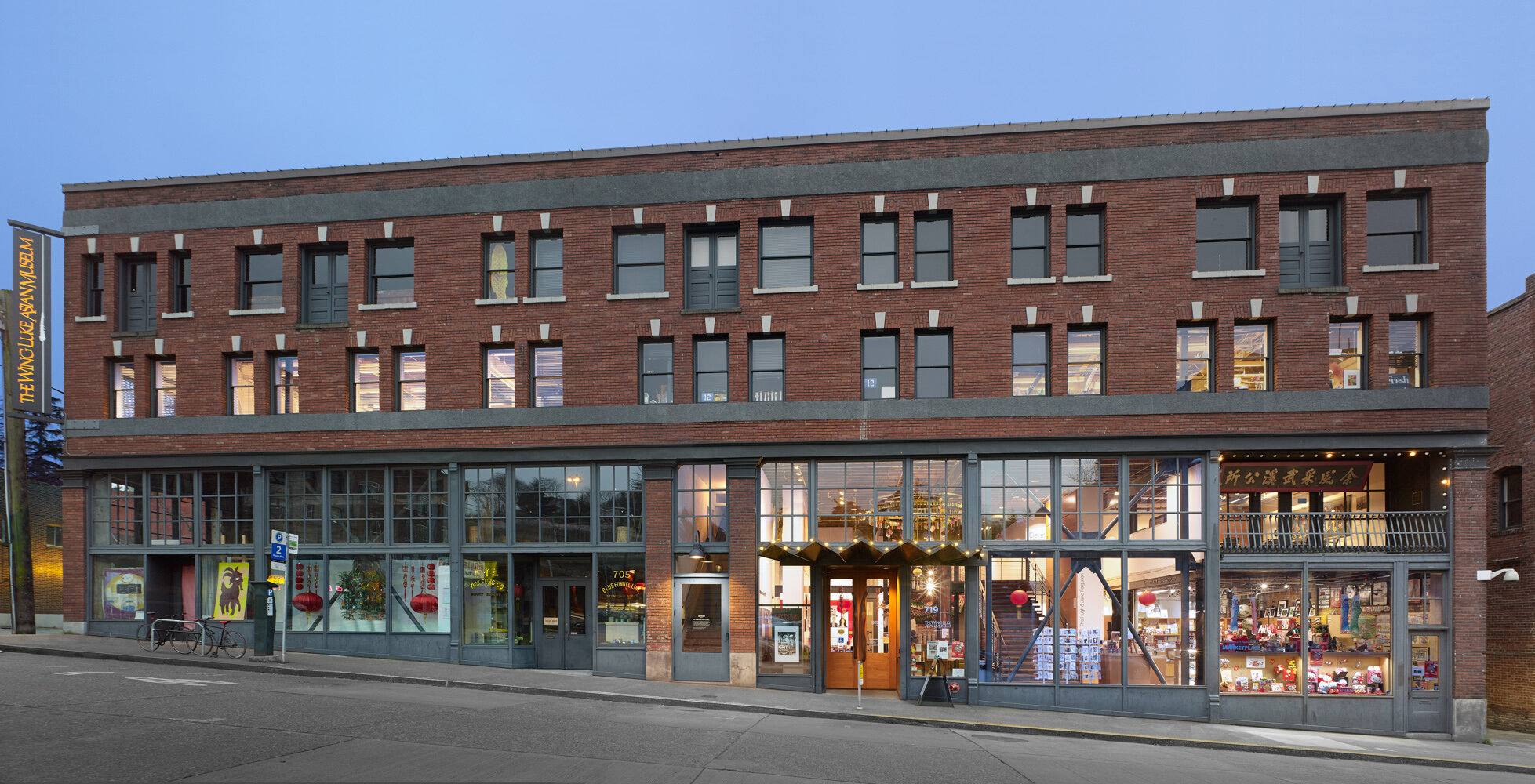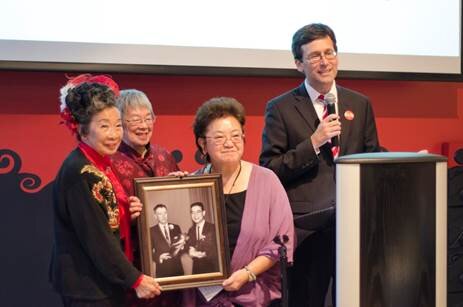The Wing Luke Museum is an art and history museum in Seattle, Washington, United States, which focuses on the culture, art and history of Asian Americans, Native Hawaiians, and Pacific Islanders. It is located in Seattle’s Chinatown-International District. Established in 1967, the museum is a Smithsonian Institution affiliate and the only pan-Asian Pacific American community-based museum in the United States.
ABOUT WING LUKE MUSEUM
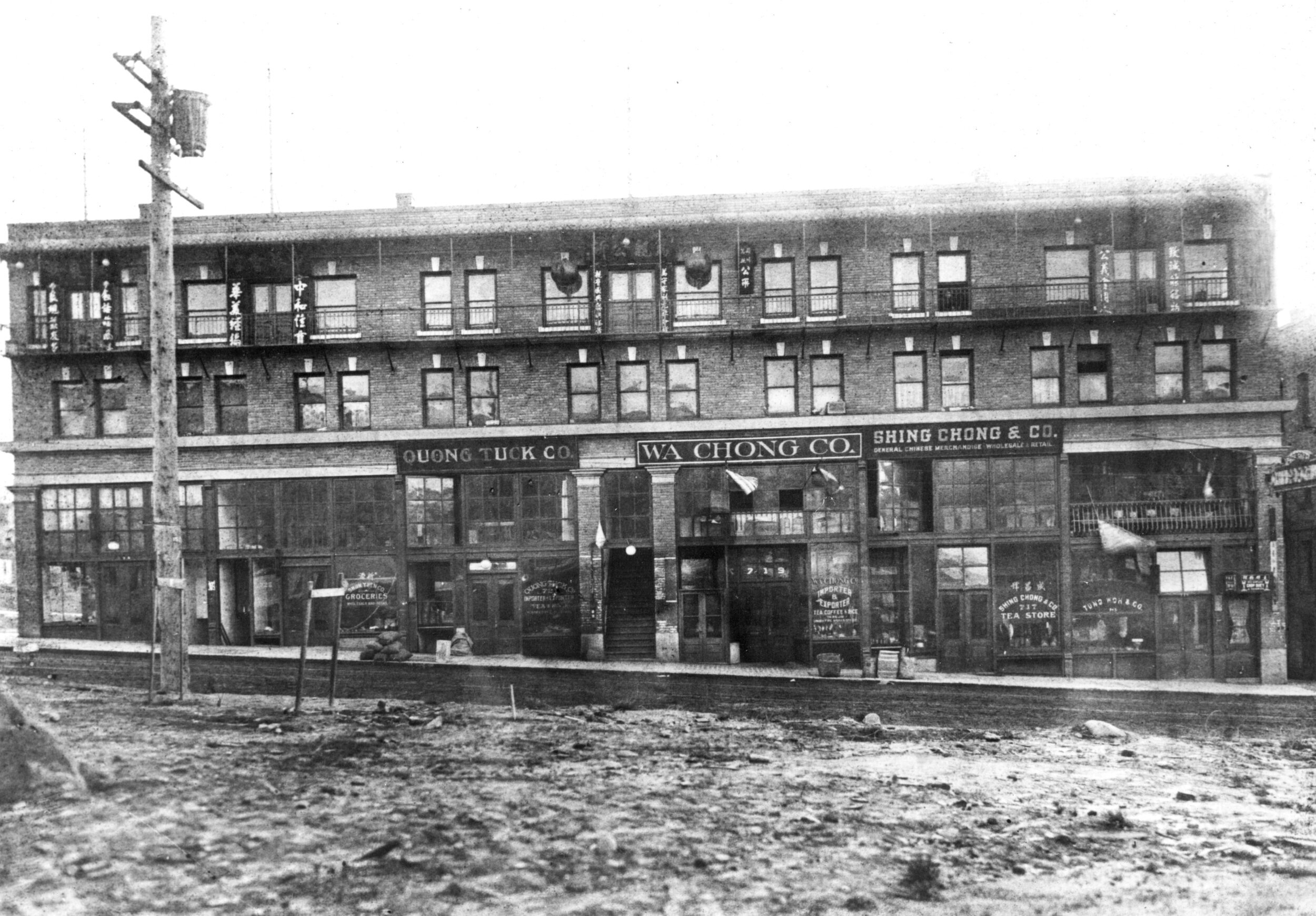
A MUSEUM LIKE NO OTHER
As a National Park Service Affiliated Area and the first Smithsonian affiliate in the Pacific Northwest, the Wing Luke Museum offers an authentic and unique perspective on the American story.
Nationally recognized for our work in creating dynamic, community-driven exhibitions and programs, we put our community at the heart of each exhibition we create.
The stories you see and hear within our walls are their authentic experiences and perspectives. From the struggles of early Asian pioneers to accomplished works by national Asian American, Native Hawaiian, and Pacific Islander (AANHPI) artists, their contributions give us a look at what it means to be uniquely American.
Our 60,000 square foot facilities offer three floors to tell our communities’ stories, with contemporary galleries showcasing both temporary and permanent exhibitions as well as preserved historic spaces accessible only through our daily guided tours.
Beyond our walls, we like to tell the story of our neighborhood, Seattle’s Chinatown-International District. While economically challenged, it is a historically and culturally vibrant area, and we see ourselves as a neighborhood concierge and an economic anchor for the nearby small businesses. From restaurants to statues that you might not otherwise notice, there are layers of history and significance that are waiting to be uncovered.
Wing Luke Museum offers guided neighborhood tours and events that will encourage you to discover stories and tastes both on and off the beaten path.
THE WING LUKE MUSEUM MISSION
We connect everyone to the dynamic history, cultures, and art of Asian Americans, Native Hawaiians, and Pacific Islanders through vivid storytelling and inspiring experiences to advance racial and social equity.
OUR GOALS
Through our exhibits, public events, and youth programs, The Wing Luke Museum aims to:
Empower Asian Americans, Native Hawaiians, and Pacific Islanders (AANHPIs) to tell their stories and histories in their own voices
Foster the work of contemporary AANHPI artists
Support and revitalize Seattle’s Chinatown-International District through our events and tours
Strengthen the AANHPI community through leadership development and opportunities
Serve as a primary Smithsonian affiliate in the Pacific Northwest, a National Park Service Affiliated Area, and as the nation’s only museum dedicated to the pan-APA community
The Wing Luke Museum is an art and history museum in Seattle, Washington, United States, which focuses on the culture, art and history of Asian Americans, Native Hawaiians, and Pacific Islanders. It is located in Seattle’s Chinatown-International District. Established in 1967, the museum is a Smithsonian Institution affiliate and the only pan-Asian Pacific American community-based museum in the United States.
WING LUKE MUSEUM’S HISTORY
1925
Wing Chong Luke is born the son of a laundryman and grocer. Immigrates to the United States at the age of 6.
1962
Wing Luke makes history as the first person of color elected to the Seattle City Council and as the first Asian American elected to public office in King County.
1963
Wing Luke plays a key role advocating for the City Council passage of the Open Housing Ordinance which led to the creation of the Seattle Human Rights Commission.
“Don’t do things because of who is right, but because of what is right.”
– Wing Luke
1965
Wing Luke’s life is cut short at the age of 40 in a plane crash in the Cascade Mountains.
1967
The Wing Luke Memorial Foundation is created in honor of Wing Luke’s legacy.
1987
The museum’s second location was in a converted garage previously known as The China Garage. It was renamed The Wing Luke Asian Museum and opened with the Theatre Off Jackson.
1993
The Community Advisory Committee (CAC) — a process developed by the Wing Luke Museum to allow local artists, community leaders, and staff to develop exhibit storylines and curate artifacts — creates its first exhibit. The structure allows for authentic and unique perspectives on the American story.
2008
Wing Luke Museum moves into its current location on South King Street and becomes a National Park Service Affiliated Area. Prior to this honor, the Museum was the first Smithsonian affiliate organization in the Pacific Northwest.
2015
The Washington State Attorney General’s office establishes the Wing Luke Civil Rights Unit in Wing Luke’s honor to investigate and enforce civil rights and anti-discrimination laws.
BUILDING HISTORY & ARCHITECTURE
Designed by Rick Sundberg, formerly of Olson Sundberg Kundig Allen Architects, Wing Luke Museum has received major international design awards, including: the 2009 Great Places Award (for excellence in the completed restoration), the 36th International Interior Design Award, and AIA 2009 Honor Awards.
Tateuchi Story Theatre
The Tateuchi Story Theatre is an intimate theatre that hosts traditional and contemporary arts through our Tateuchi Story Theatre Performing Arts Series. It also features the restored Nippon Kan Scrim, a large advertising curtain that had been used in Seattle’s historic Nippon Kan Theatre, once a social and cultural hub for the Japanese American community. Many thanks to the Tateuchi Foundation for its ongoing support of this program series. The Atsuhiko & Ina Goodwin Tateuchi Foundation promotes international understanding, knowledge, and the quality of relations between Japan and the United States, providing the Puget Sound region with greater exposure to the performing arts and culture of Japan.
Family Associations The museum’s building originally housed several family associations – the Gee How Oak Tin Family Association, the Yee Family Association, the Lee Family Association, and the Ho Nam Family Association. As Chinese pioneers sojourned from villages in Southern China to areas throughout the world, they set up organizations to help the Chinese community settle. Here in the US, when Chinese immigrants began arriving in large numbers to the West in the late 1800s, these family associations soon became fixtures in American cities like Seattle, San Francisco, Los Angeles, and New York. In most cases, family associations were established around family names, such as Lee, Wong, and Eng. These associations welcomed new immigrants who couldn’t speak English, helping them find a home and job as well as serving as a central hub for social gatherings and special celebrations. In their heyday, family associations were the social and political glue for Chinatowns across America, helping to meet the basic needs of the immigrant community and fighting against discrimination and anti-Chinese laws of that time. Today, most family associations have evolved to be primarily social organizations and keepers of genealogical ties to ancestral roots in China. On the museum’s historic hotel tour, you will visit a historic Family Association and see and hear about where these Family Associations are today.
Art Installations Learn more about the permanent art installations created by AANHPI artists, located throughout our building. Their art represents a range of artistic media and explores themes that include cultural roots; immigration; connections between Asia and America; and community diversity.
Susie Kozawa (b. 1949), and Erin Shie Palmer (b. 1957), Letter Cloud, 2008
Susie Kozawa (b. 1949), and Erin Shie Palmer (b. 1957), Echoing Home, 2008
Ron Ho (b.1936) and Stewart Wong, Our Heritage, Our Journey, Our Dreams, 2002, 2008
Luke Family Associations
As Chinese pioneers sojourned from villages in Southern China to areas throughout the world, they set up organizations to help the Chinese community settle. Here in the US, when Chinese immigrants began arriving in large numbers to the West in the late 1800s, these family associations soon became fixtures in American cities like Seattle, San Francisco, Los Angeles, and New York.
Gee How Oak Tin Family Association Room
In most cases, family associations were established around family names, such as Lee, Wong, and Eng. These associations welcomed new immigrants who couldn’t speak English, helping them find a home and job as well as serving as a central hub for social gatherings and special celebrations. In their heyday, family associations were the social and political glue for Chinatowns across America, helping to meet the basic needs of the immigrant community and fighting against discrimination and anti-Chinese laws of that time. Today, most family associations have evolved to be primarily social organizations and keepers of genealogical ties to ancestral roots in China. The Museum’s building originally housed several family associations – the Gee How Oak Tin Family Association, the Yee Family Association, the Lee Family Association, and the Ho Nam Family Association. On the Museum’s historic hotel tour, you will visit a historic Family Association and see and hear about where these Family Associations are today.
ADDITIONAL INFORMATION:
Gee How Oak Tin Family Association
THE WING LUKE MUSEUM LEADERSHIP
The Wing Luke Museum is an institution like no other. Our Board leadership reflects what makes our institution a unique treasure. The Museum’s Board of Trustees hails from diverse leadership roles, across a wide range of industries including business, healthcare, the arts, public affairs, and community activism. These dedicated stewards collaborate with Museum leadership to manifest, protect, and advance the organization's strategic vision. Together, their distinctive talents ensure that the Wing Luke Museum continues as a passionate keeper of the Chinatown-International District’s culture, art, and heritage for generations to come.
BOARD OF TRUSTEES
Officers
Ellen Ferguson, Co-President
Diane Sugimura, Co-Vice President
Sai Chaleunphonh, Treasurer
Mimi Gan, Secretary
Members at Large
Chera Amlag
Nanette Fok
Jamie Ford
Rachael Kitagawa
Shannon Lee
Julien Loh
Gloria Lung Wakayama
Midori Matsui
Maya Mendoza-Exstrom
Victor Mizumori
Michael Myint
Pat Norikane Logerwell
Mark Takagi
Adriel Tam
Museum Leadership
Kamahanahokulani Farrar, Interim Executive Director
Christine Johnson, Sr. Director of Advancement
Stephen McLean, Sr. Director of Strategic Communications
Vivian Chan, Director of Community Programs
Tracey Fugami, Director of People & Culture
CONNECT TO THE MUSEUM
COMMUNITY PROCESS
What does it take to create exhibits and programs at Wing Luke Museum? Learn about our community-developed model for creating community-centered exhibits, programs, and events.
PRESS
Connect with Wing Luke Museum, read the latest news, and, learn about initiatives impacting the Chinatown-International District and beyond.
COLLECTIONS
Explore the Governor Gary Locke Library and Community Heritage Center for archives, photographs, artifacts, and oral histories.
VOLUNTEER
Support and strengthen the Chinatown-International District, meet new people, develop professional skills, and join the community of support for Wing Luke Museum!
SUPPORT THE MUSEUM
Museum members support our exhibits, programs, and efforts to revitalize the Chinatown-International District. Learn about becoming a member today!
PROFESSIONAL DEVELOPMENT
Wing Luke Museum workshops provide K-12 educators an opportunity to enrich their teaching through the study of humanities topics that bear upon K-12 education.






